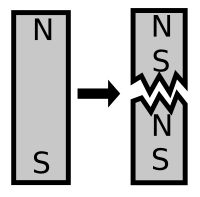
Photo from wikipedia
Magnetic flux rope (MFR) is the core structure of the greatest eruptions, i.e., the coronal mass ejections (CMEs), on the Sun, and magnetic clouds are post-eruption MFRs in interplanetary space.… Click to show full abstract
Magnetic flux rope (MFR) is the core structure of the greatest eruptions, i.e., the coronal mass ejections (CMEs), on the Sun, and magnetic clouds are post-eruption MFRs in interplanetary space. There is a strong debate about whether or not a MFR exists prior to a CME and how the MFR forms/grows through magnetic reconnection during the eruption. Here we report a rare event, in which a magnetic cloud was observed sequentially by four spacecraft near Mercury, Venus, Earth and Mars, respectively. With the aids of a uniform-twist flux rope model and a newly developed method that can recover a shock-compressed structure, we find that the axial magnetic flux and helicity of the magnetic cloud decreased when it propagated outward but the twist increased. Our analysis suggests that the `pancaking' effect and `erosion' effect may jointly cause such variations. The significance of the `pancaking' effect is difficult to be estimated, but the signature of the erosion can be found as the imbalance of the azimuthal flux of the cloud. The latter implies that the magnetic cloud was eroded significantly leaving its inner core exposed to the solar wind at far distance. The increase of the twist together with the presence of the erosion effect suggests that the post-eruption MFR may have a high-twist core enveloped by a less-twisted outer shell. These results pose a great challenge to the current understanding on the solar eruptions as well as the formation and instability of MFRs.
Journal Title: Journal of Geophysical Research
Year Published: 2018
Link to full text (if available)
Share on Social Media: Sign Up to like & get
recommendations!